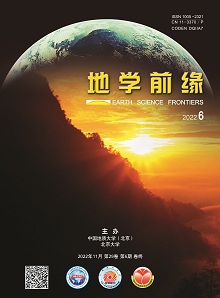Understanding basin's geological structure and tectonic evolution and exploring its oil and gas distribution pattern is key to revealing the geological features of China, and the energy resources distributions, environmental changes, and potential hydrocarbon exploration targets in China. Based on the new data of recent petroleum exploration and using the methodology of comparative geo-tectonics, this paper studies the superimposed sedimentary basins in China from the view point of mobile geo-tectonic history, focusing specifically on the basin's tectonic evolution, tectonic subdivision, geologic framework, and pool-formation models, and explores the basin's oil and gas distribution patterns. According to our analysis, the superimposed sedimentary basins in China evolve through four tectonic cycles during the Meso- to Neo-Proterozoic, Cambrian-Devonian (or Middle Devonian), (Late Devonian-) Carboniferous-Triassic, and Jurassic-Quaternary Periods. The sedimentary basins in China can be subdivided into ten sedimentary basin areas: northern Xinjiang, inner Mongolian, Songliao, Tarim-Alax, Ordos, Bohai Bay, Qinghai-Tibet, Sichuan, southern China, and oceanic area. They can be further characterized by eight structural styles as foreland/cratonic-basin, foreland/sag, sag/faulted-depression, faulted-depression/sag, inverted faulted-depression, passive margin, or strike-slip superimposed basins, or as modified residual basins. Twelve types of hydrocarbon pool-formation are developed, which are represented by the Anyue rift trough, northern Tarim, Sulig composite delta, Mahu sag, Luliang uplift, Kuqa thrust belt, Daqing anticline, paleo-buried hill, central canyon channel, eastern Qaidam biogas, Sichuan intra-source rock, and Qinshui syncline coalbed gas. Within a sag/faulted-depression superimposed basin, oil and gas distributions are typically ordered spatially, with the interface area most favorable for hydrocarbon accumulation. However, oil and gas distribution patterns are highly heterogeneous across different structural styles. For example, in the foreland/cratonic-basin superimposed basins of central and western China, oil and gas distribute separately in isolation, whilst in the passive-margin/faulted-depression superimposed basins of the oceanic area, oil and gas zones distribute respectively along the inner and outer sedimentary belts. The multi-cycle superimposed basins in China generally have a distinctive ‘three ring-like’ oil and gas distribution pattern within each basin area.

